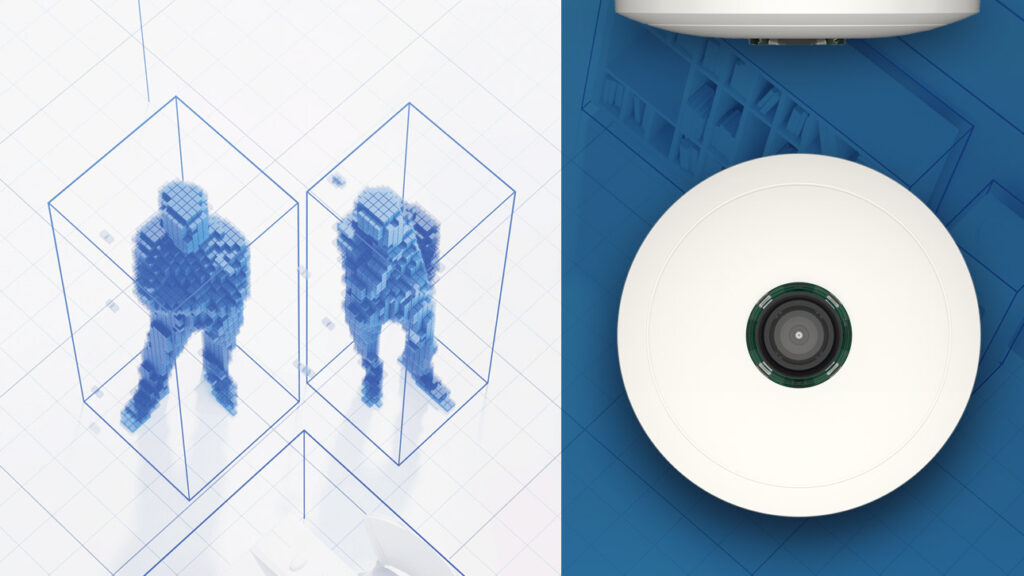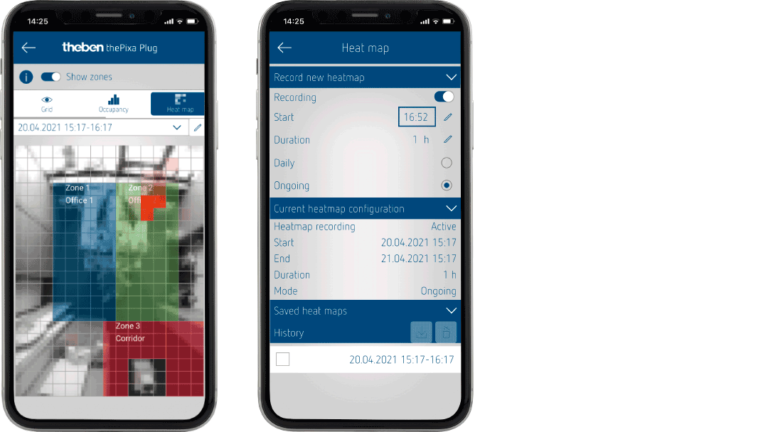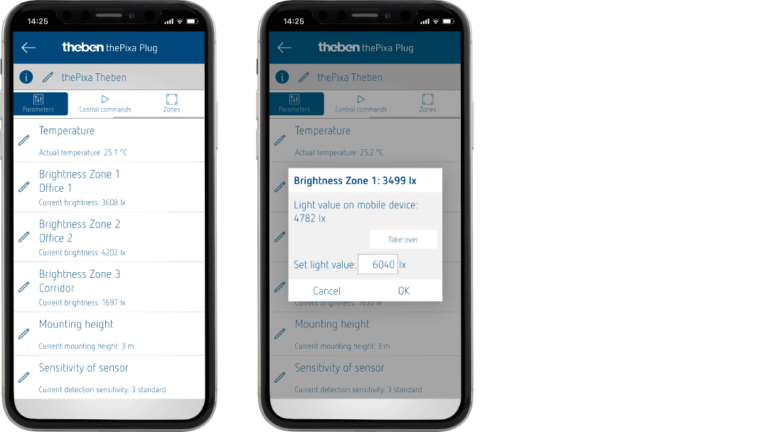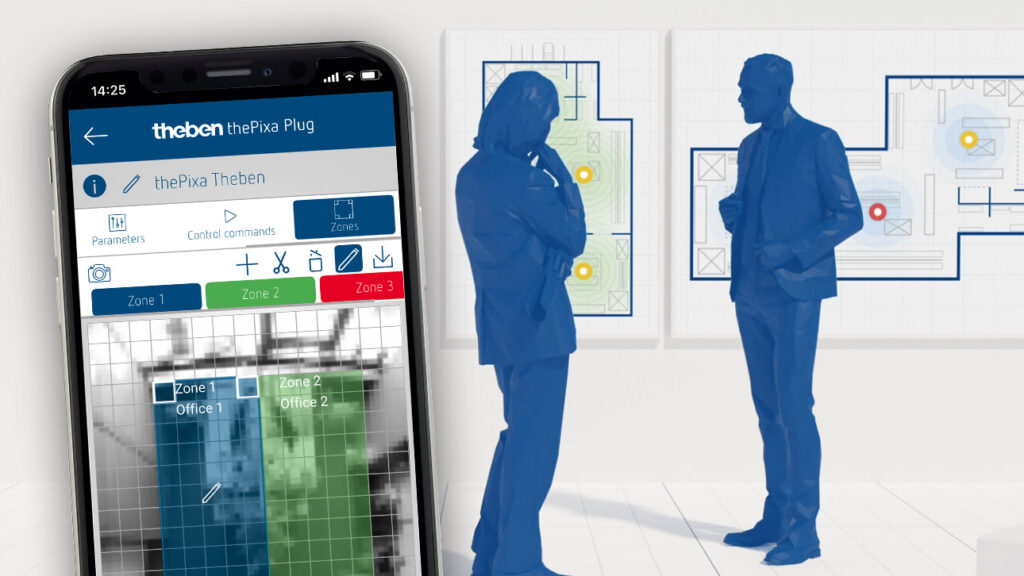The latest development from Theben, thePixa KNX optical presence sensor detects how many people are in a room and exactly where they are. This information enables the execution of pre-programmed actions in the KNX building management system. This not only improves building automation functions, but also brings completely new benefits, especially for building operators. For example, you can flexibly adapt the allocation of desks, optimise room occupancy and organise cleaning of the building.

For decades, classic occupancy sensors using passive infrared technology have been controlling and regulating room lighting and temperature in an energy-efficient way. They detect people on the basis of body temperature and movement.
The pixel-based detection technology of thPixa KNX optical presence sensor opens up further application possibilities with greater efficiency, far beyond the range of PIR presence sensors.
Key benefits of thePixa
- Pixel-based detection technology
- Recognising and counting objects and people
- 100% GDPR compliance
- Implementation of KNX building automation operations
- Value added for building operators
- Easy to program with your own application
Award-winning innovation
thePixa was recently awarded the German Innovation Prize 2021. The jury's reasoning highlighted, among other things, the versatility of the application, the ease of use, the high degree of user-focus and the clean, minimalist design. They also highlighted the additional benefit of information on occupancy rates during epidemics.
GDPR-compliant recording
thePixa KNX uses very low resolution images and is therefore fully GDPR compliant (DEKRA tested). Using image analysis, the optical presence sensor identifies changes in the monitored premises and processes the related information. ThePixa detects and counts how many moving objects are in the detection area and then displays the current data using a gridded floor plan. In this way, the image of the room is not displayed as a live image, but as a static background image.
Impressive added value
The detection result is processed visually as a heat map and can be retrieved together with detailed occupancy statistics in thePixa Plug application. This information triggers a predefined action in the KNX building management system, for example, activating the ventilation system in a full meeting room.

The visualisation of the detected areas using a heat map has a high added value for building operators. In-store product displays can be optimised by knowing which products are most frequently stopped by customers and which are of greatest interest. Valuable information can also be obtained in offices, by determining which workstations are used more or less, which can contribute to, for example, a more efficient organisation of desk sharing. This can reduce the running and energy costs of buildings.
Easy programming with app
With thePixa Plug, the detection area can be divided into up to 6 zones and programmed as required. Precise division of the detection area into sections of up to 11 x 15.5 m allows precise lighting control in larger rooms, preventing unnecessary switching of lights.

High installation costs when converting or rebuilding a room are completely eliminated. It is easy to create new zones within the detection area of the application. With thePixa Plug, it is also possible to create exclusion zones where detected movements do not trigger any action, for example during a manufacturing process. The settings programmed in the app are then simply transferred from the smartphone or tablet to thePixa via Bluetooth.

